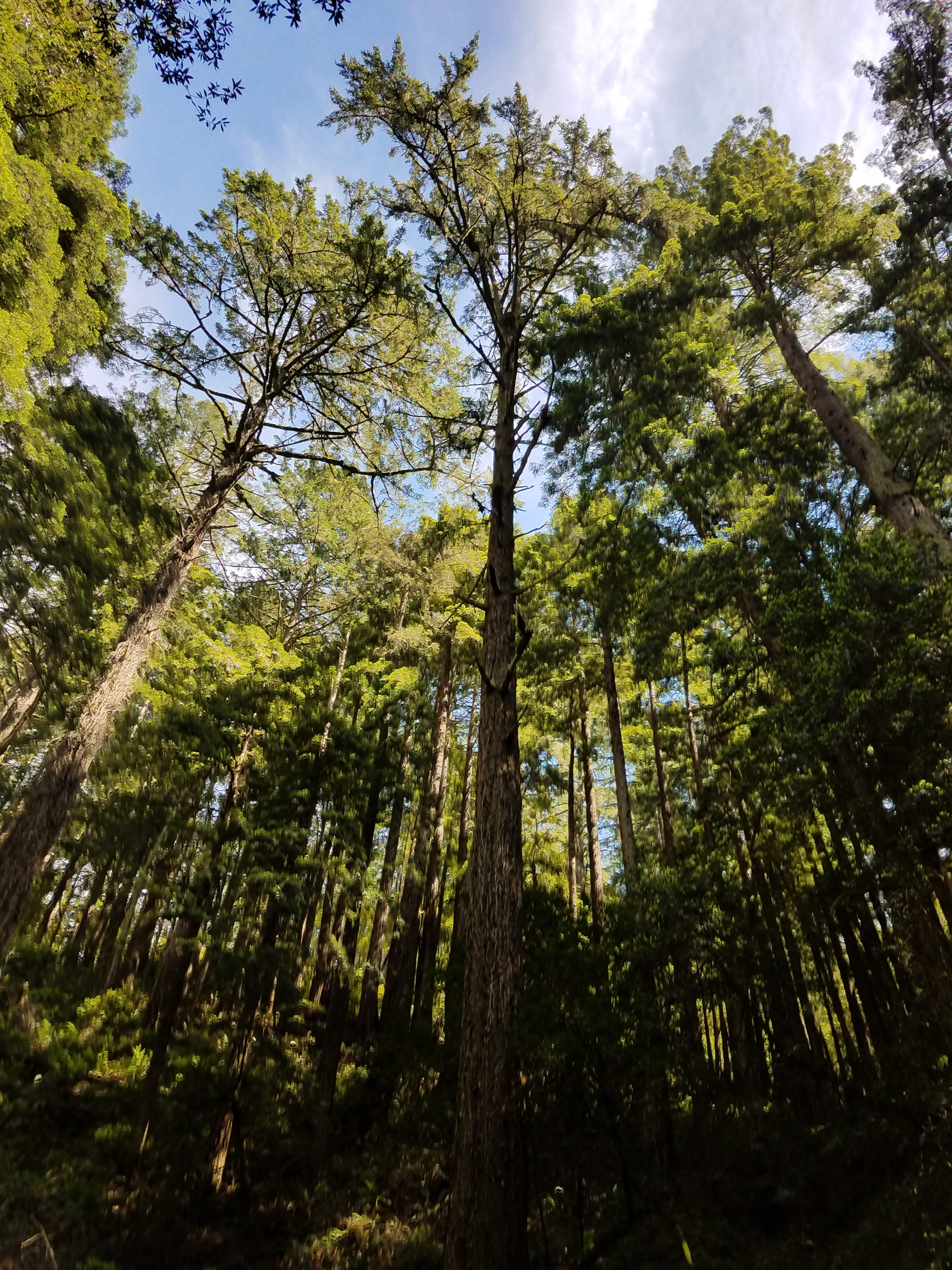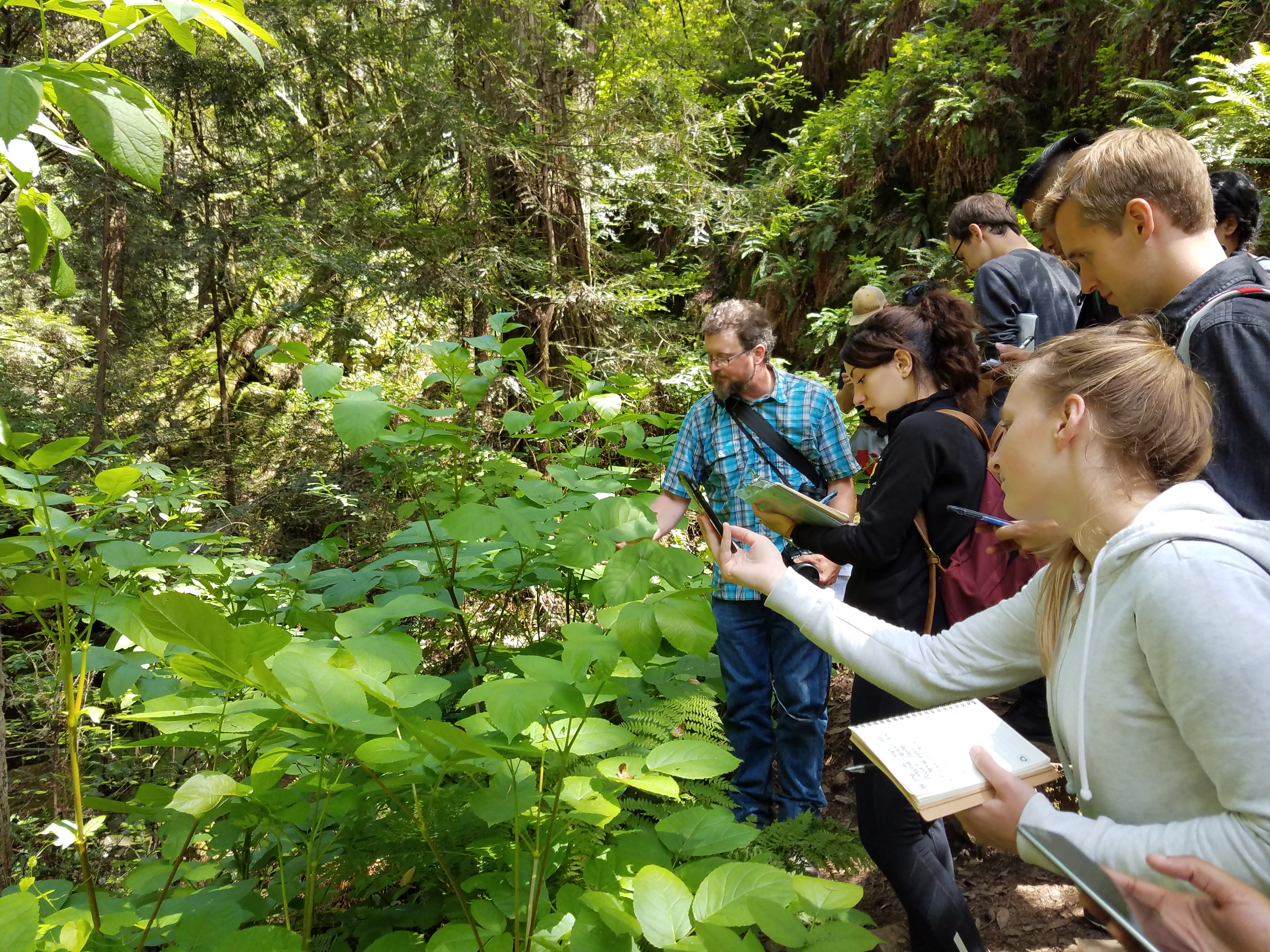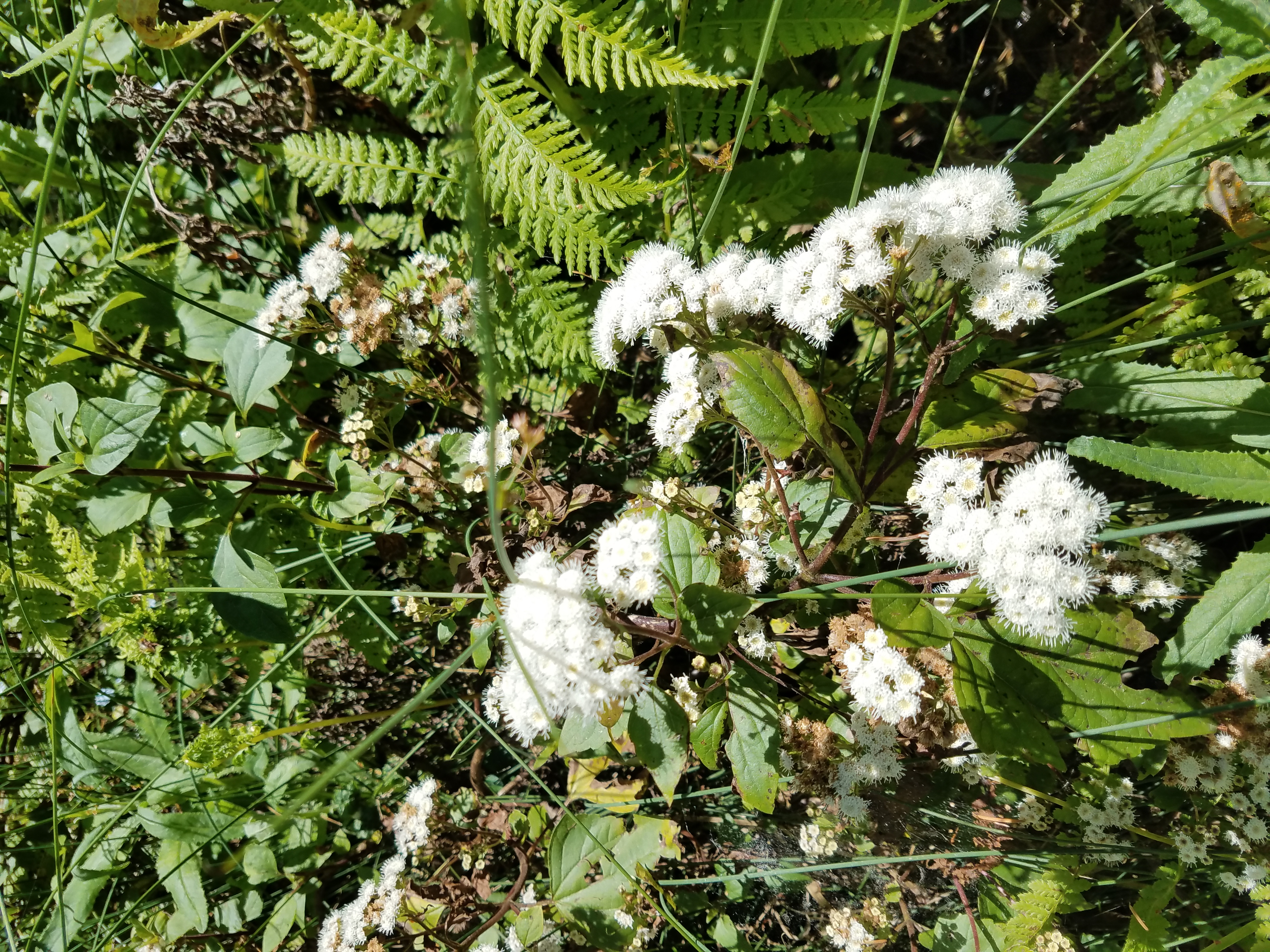Date: 5/4/2017
Location: Steep Ravine (Coordinates: (37.88880,-122.62330 – Elevation: ~200-250 ft)
Site Description:
Steep Ravine is a hiking trail located near HWY 1, along the California coast off the slopes of Mt. Tam. Redwood trees are found in abundance here. The harsh coastal winds are blocked by the foliage and the tree-cover – allowing some species to grow higher from the ground. The trail itself was fairly muddy, and subjected us to bypassing many rocks and crevices along the way. Some redwood trees had fallen and some also had the markings of experiencing a forest fire – although they seem in good condition must likely due to to their thick bark.
Species Description:
1) Sambucus racemosa (Family: Adoxaceae), known by its common name “Red elderberry” is a species that grows in riparian environments or woodlands. It is a treelike shrub – every stem is composed of 5-7 leaflets. The inflorescence is a cone-shaped panicle. It was my first sight of Sambucus spp. in the wild with its fruit form after seeing so many crazy google images of it displaying many fruit, but never actually seeing it in person. This is one species I won’t forget!
2) Rubus parviflorus (Family: Rosaceae), going by its common-name “Thimbleberry”, is a species native to western North America. It is a shrub – but unlike many of its other family members, its stem does not possess thorns. Leaves are palmate and pubescent in nature. Its flower has 5 white petals, and its flower is the largest among any Rubus species. Dr. Paul told is that the Thimbleberry can be especially found where there are light-gaps through the forest – which explained where we found it.
3) Equisetum telmateia (Family: Equisetaceae), known as the “Giant horsetail”, is a herbaceous perennial plant that is found in damp shady places – making Steep Ravine a perfect habitat for it. It looks quite unique – with stems that are HIGHLY branched . Its sterile stems, made around this time in the year, are 30-150 cm long. Its needle-like leaves make it stand out. It is especially notable as its stems contain silica – making chewing on its stem a bad idea as they can wear down the teeth. Much of our petroleum nowadays comes from ancestors of this species, which were compressed by intense sedimentation.
Excursion Narrative:
The hype was unreal unfortunately – as in, it was not real at all. Steep Ravine was not aptly named, as the hike through the trail was easily manageable. The trail was fairly thin – making us traverse it carefully in a single-file line usually. I had biked through the same forest many times previously, but had never traversed it in foot. It was, per-usual, beautiful. The hike proved to be a meditative experience, with the forest decreasing the stress of finals week.
One of the things most notable about our trip was the presence of overbearing Redwood trees – that displayed prominently throughout their trek. We saw evidence of redwood trees that were subject to a wildfire – yet seemly well-preserved most likely due to their bark.
Finally – what made this trip most memorable was the fact that I was able to scare multiple people on the way back to the cars. MacDaddy, Colleen, Natalie, Patrick, and Negin were my victims – nobody could escape my wrath.
In all seriousness – one of the biggest thing I was reminded throughout the trip was how many beautiful areas are located in the Marin area – yet, they are difficult to gain access to unless you have a car (need to get one!)
Other encountered species:







